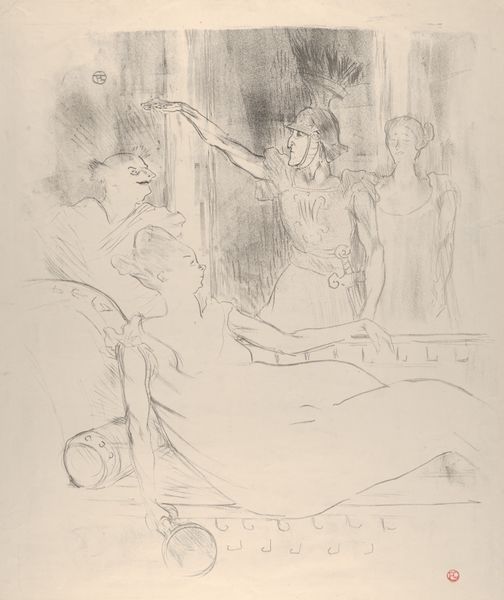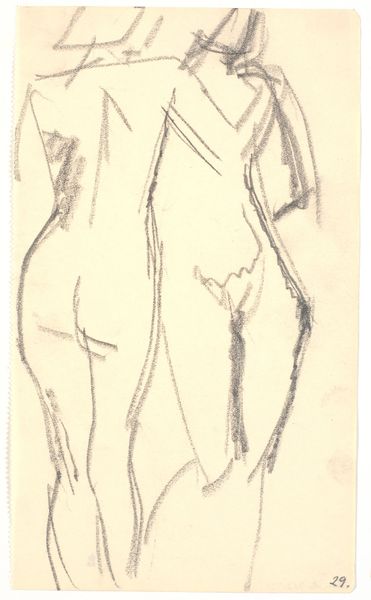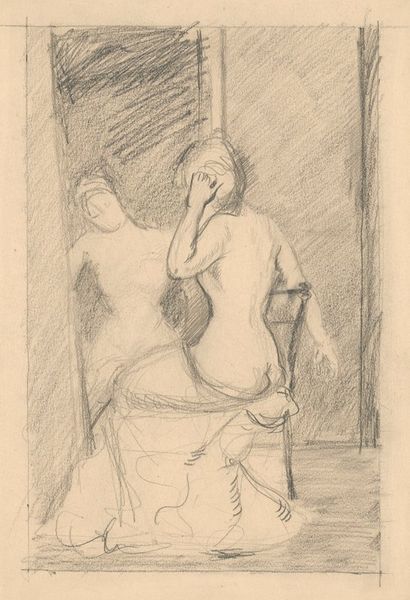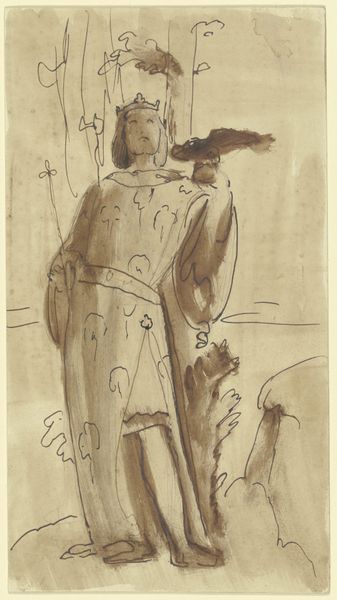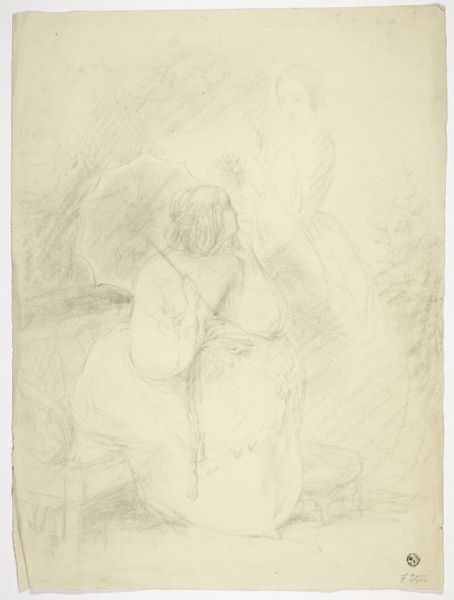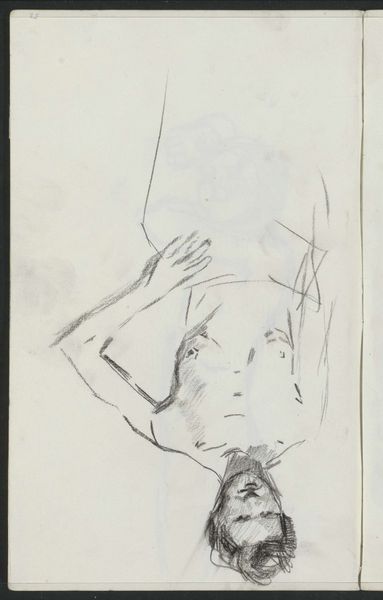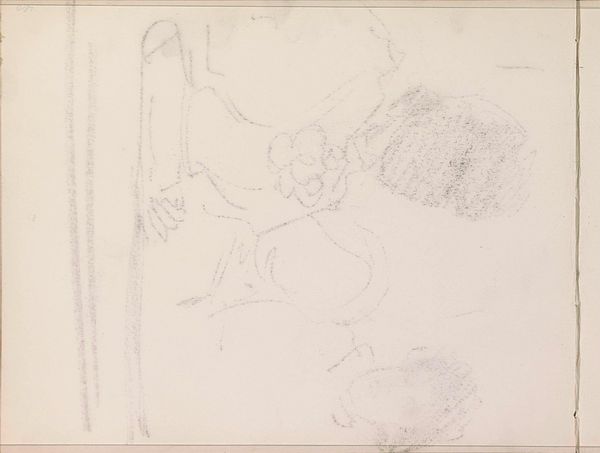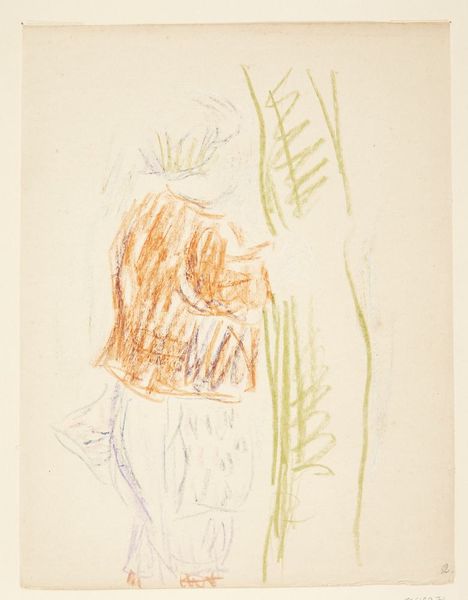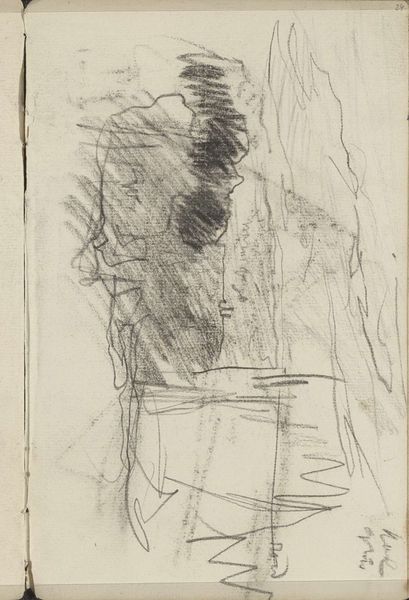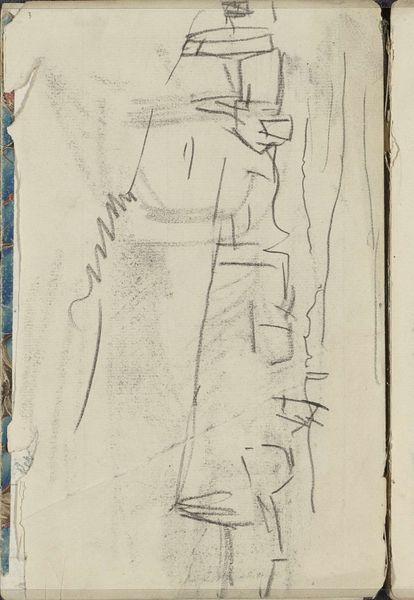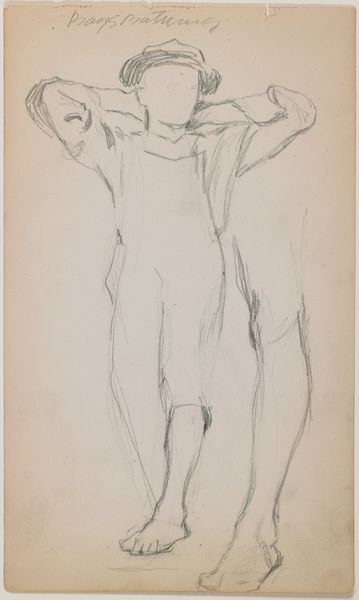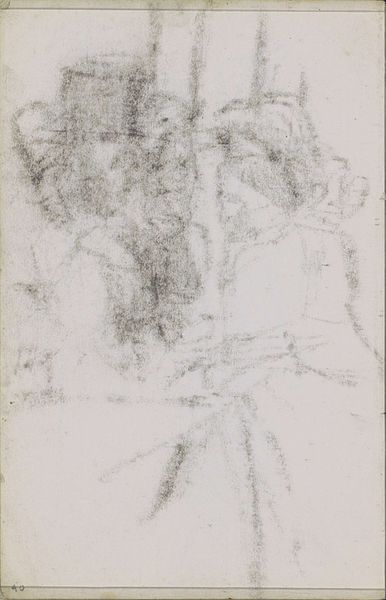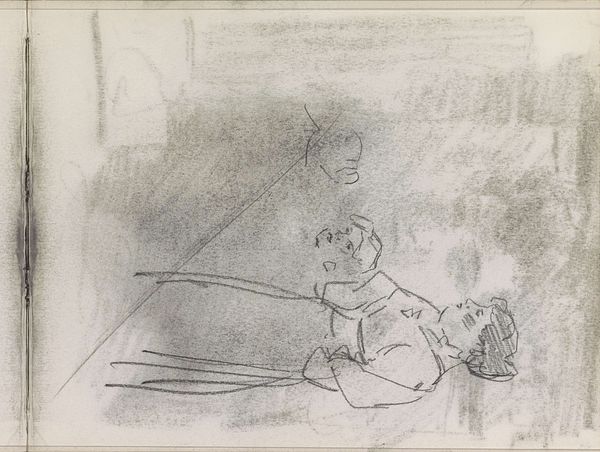
Gruppe med to figurer. Studieblad efter relieffer i Borobudur, Java. 1921
0:00
0:00
drawing, paper, pencil
#
drawing
#
figuration
#
paper
#
pencil
Dimensions: 167 mm (height) x 96 mm (width) (bladmaal)
Editor: Here we have "Group with Two Figures. Study sheet after reliefs in Borobudur, Java," a pencil on paper drawing created in 1921 by Svend Rathsack. It feels...fragile. The lines are so light, almost tentative. What strikes you about it? Curator: I'm immediately drawn to the act of copying. Rathsack isn’t presenting original subject matter. He's reproducing reliefs found on Borobudur. It's an explicit act of labor, a material engagement with pre-existing imagery, removed from its original cultural and religious context. How does the physical act of recreating these forms alter their meaning? Editor: That's fascinating. I hadn't considered the implications of it being a copy. Does the medium – pencil on paper – change how we perceive it, compared to the stone reliefs? Curator: Absolutely. Pencil, as a relatively inexpensive and easily accessible material, democratizes the image. Stone, on the other hand, speaks to permanence, to an established social order capable of funding such monumental projects. Think about the act of translating the relief: from stone to paper. What’s lost, and what’s gained? Are we confronting the commodification of Eastern culture through a Western artistic lens? Editor: So, by using pencil on paper, Rathsack's study sheet is kind of stripping away the original's power, bringing the image into a more accessible realm. But, doesn't that also mean he's, perhaps unintentionally, participating in a sort of artistic appropriation? Curator: Precisely. The reproduction and distribution of this imagery raises serious questions about ownership, labor, and cultural exchange. Editor: This really gives me a new appreciation for considering the 'how' and 'why' of art, not just the 'what.' Thank you for sharing your materialist point of view, it really opens the artwork up to fresh interpretations. Curator: It highlights how integral materials and process are to an artwork's ultimate meaning and its place in a broader network of social exchange. The making is just as important as the made!
Comments
No comments
Be the first to comment and join the conversation on the ultimate creative platform.
